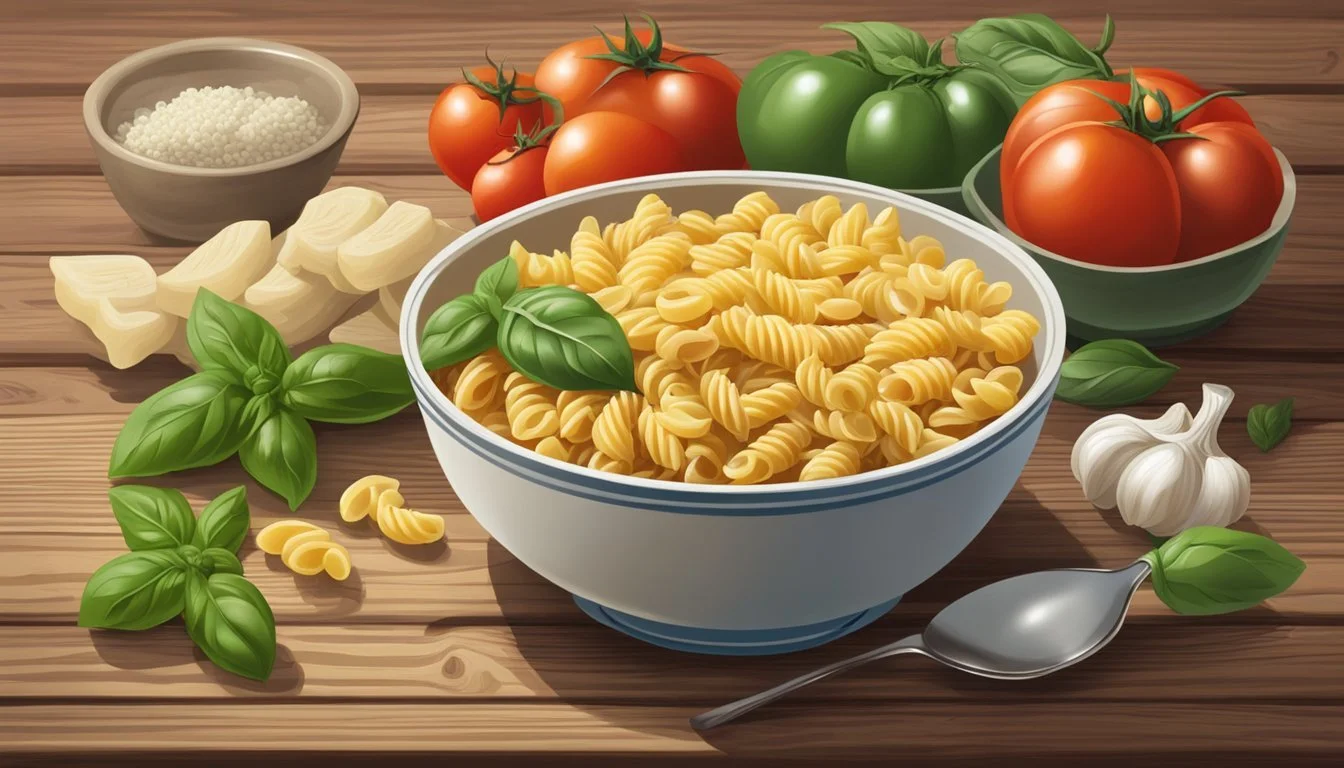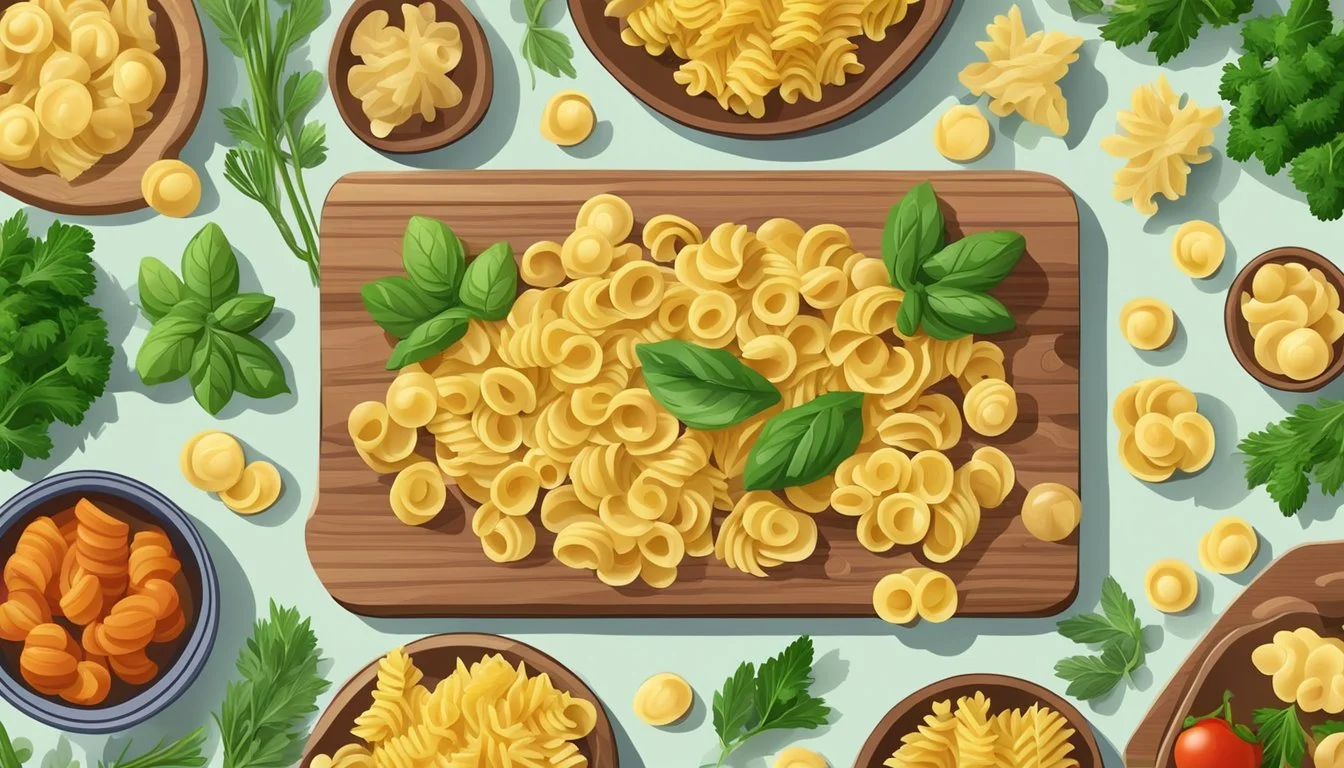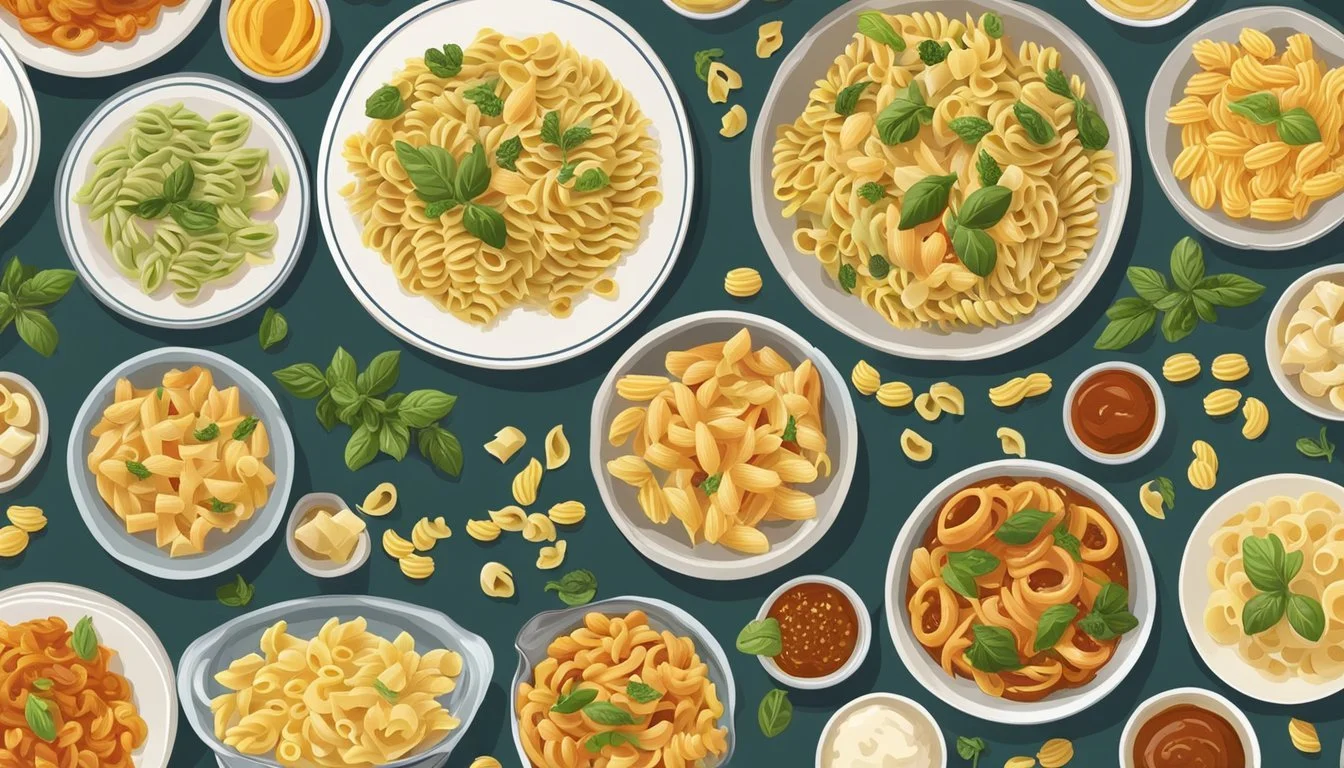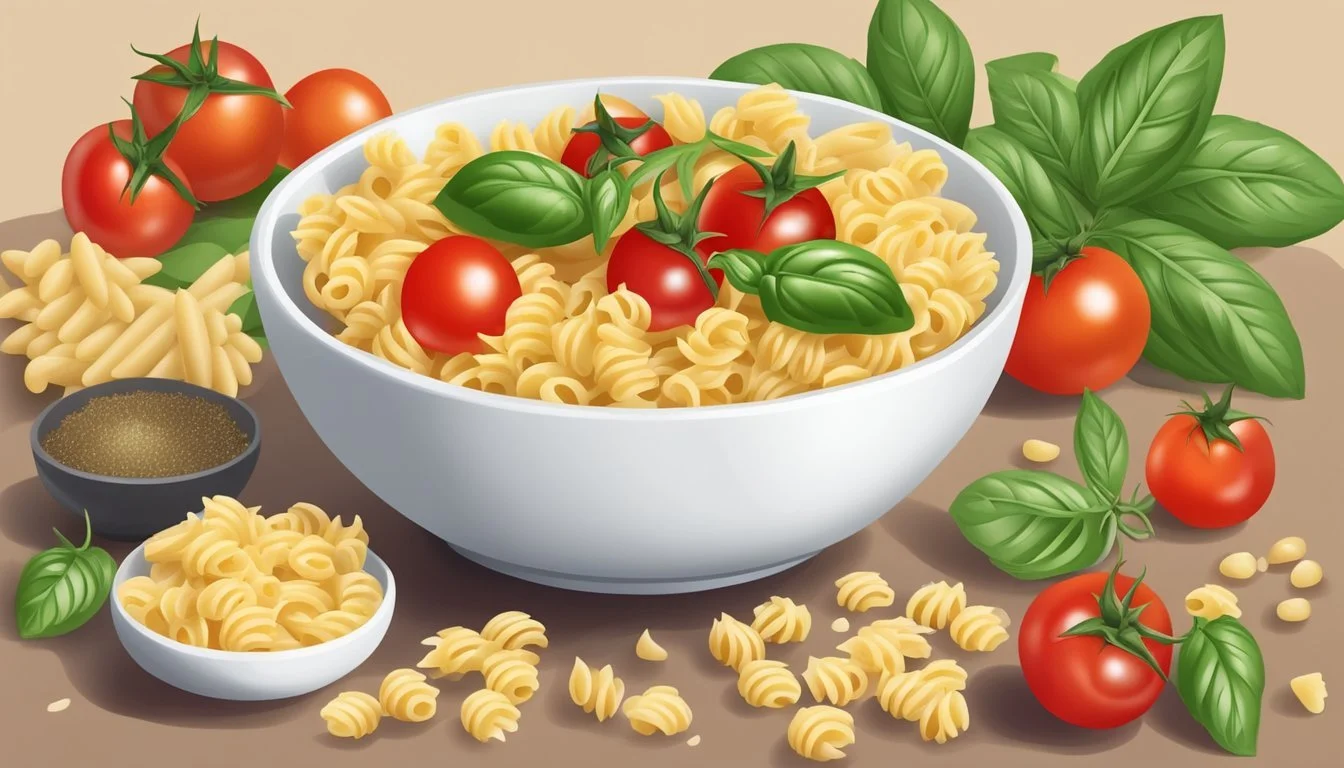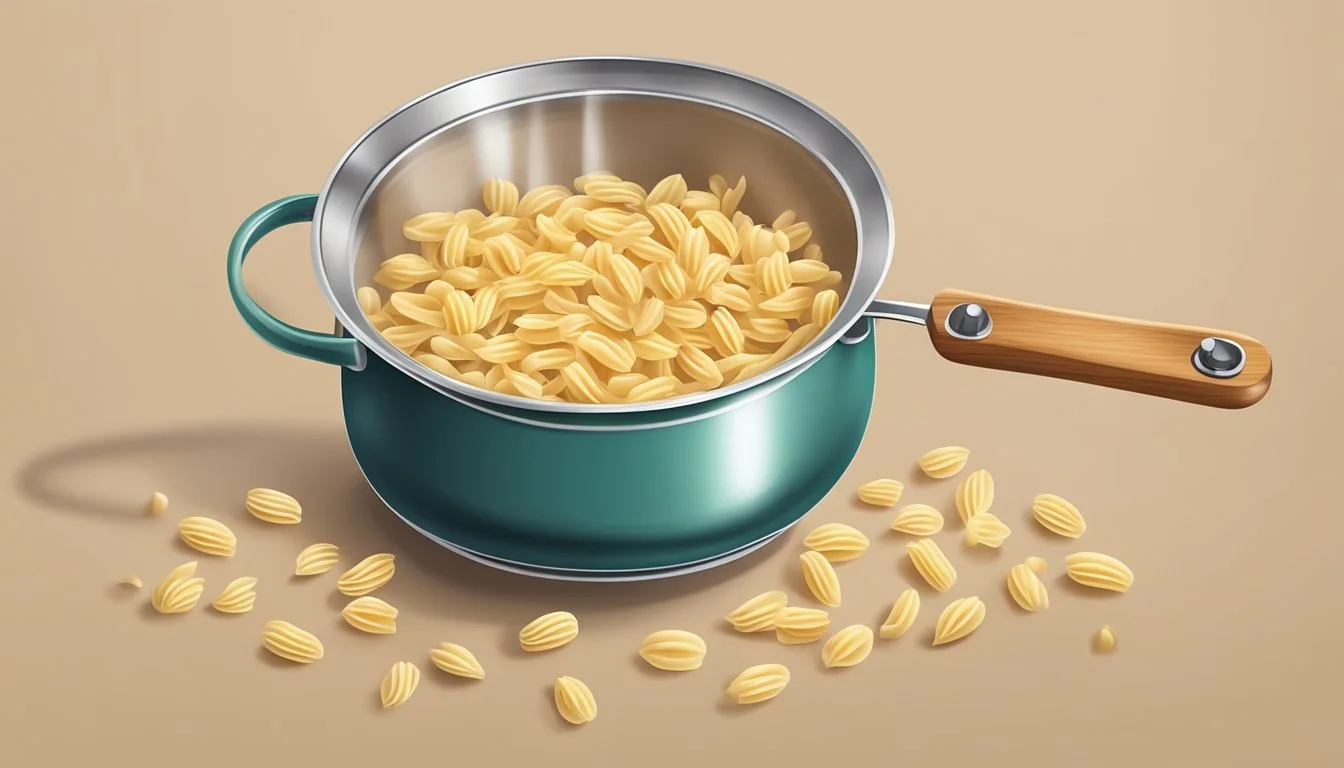Cavatelli Pasta Substitutes
Best Alternatives for Your Italian Dishes
Cavatelli pasta (What wine goes well with pasta?), a staple of Italian cuisine, is beloved for its small, shell-like shape that adeptly cradles sauces. Recognized by its rolled edges and groove down its middle, this pasta allows for sauce to adhere smoothly, ensuring a flavorful bite each time. Crafted traditionally from semolina dough, cavatelli embodies the heartiness and rustic charm of Italian cooking. It is a versatile pasta that can be paired with a robust meat sauce or a simple garlic and oil dressing.
Occasionally, home cooks and chefs alike may find themselves in need of an alternative to cavatelli pasta. Whether due to dietary constraints, availability issues, or a desire for culinary experimentation, there are several pasta substitutes that can closely mimic the texture and shape of cavatelli. Substitutes such as orecchiette, gnocchi, and fusilli are not only readily available at grocery stores but also hold onto sauces well, offering a similar dining experience to that of cavatelli pasta.
Choosing the right substitute for cavatelli involves considering the characteristics of the pasta. An ideal replacement will have a comparable size to ensure even cooking and a texture that picks up and holds the sauce in a similar manner. Orecchiette, for instance, with its small, dome-like shape, provides a dense bite akin to cavatelli. Gnocchi, while slightly different in texture due to its potato base, offers a delightful chew that pairs well with rich sauces. These alternatives provide flexibility for those seeking the essence of cavatelli pasta with a twist.
Understanding Cavatelli Pasta
Cavatelli pasta holds a distinctive place in Italian cuisine with its unique shape and texture, particularly in the regions of Southern Italy.
Origins and Regional Significance
Cavatelli originates from Italy, with a notable presence in the southern regions such as Molise. This pasta has deep roots in Italian culinary traditions, reflecting the simplicity and rustic nature of Southern Italian cuisine. In these regions, cavatelli is often associated with home cooking and family gatherings.
Cavatelli Characteristics
The texture of cavatelli is one of its defining features. Made from semolina flour, water, and sometimes ricotta, it is rolled into small, shell-like formations that are excellent for clinging onto sauces. Its surface is grooved, allowing it to capture more of the sauce it's served with. Cavatelli’s firm yet tender bite is a direct result of the semolina flour, a staple ingredient that offers a beneficial balance that doesn’t overshadow accompanying flavors.
Substitutes for Cavatelli Pasta
When selecting a substitute for cavatelli pasta, one should consider the alternative's ability to complement sauces and maintain the integrity of the dish. Each of the following alternatives brings its distinctive shape and texture to the table.
Gnocchi: A Similar Alternative
Gnocchi shares a similarity with cavatelli in its doughy texture, making it a satisfying substitute. These small, soft dumplings are adept at holding sauces and can be seamlessly introduced into most recipes calling for cavatelli.
Orecchiette and Conchiglie: Shape Matters
Orecchiette pasta, with its concave shape, mimics the sauce-holding capabilities of cavatelli. Similarly, conchiglie, shaped like small shells, effectively captures chunky sauces, enhancing the flavor of the Italian dish.
Rotini and Fusilli: Capturing the Sauce
Pasta shapes such as rotini and fusilli are excellent for holding sauces due to their spirals and twists. Their textured surfaces cling to sauces, ensuring that every bite is as flavorful as one made with cavatelli.
Farfalle and Gemelli: For Aesthetics and Function
Farfalle, known for its butterfly shape, and gemelli, with its twin spiral design, not only add visual appeal to a dish but also function well in recipes. Their unique shapes are adept at holding lighter sauces, making them practical cavatelli substitutes.
Making Homemade Cavatelli
Crafting cavatelli pasta at home allows for a personalized touch to this classic dish, originating from the Molise region of Italy. It's a simple and rewarding cooking project.
Ingredients and Tools Required
Ingredients:
All-purpose flour: 2 cups
Ricotta cheese: 1 cup
Large eggs: 2
Salt: A pinch
Tools:
Large mixing bowl
Fork
Clean work surface
Pastry scraper
Cavatelli pasta board (optional)
The Process of Making Cavatelli
Firstly, all-purpose flour is the foundation for the pasta dough; it provides the dough with the necessary structure. To begin, one must combine the all-purpose flour with a pinch of salt in a large bowl. For an authentic touch, one might choose to use durum wheat semolina flour, as it imparts a distinctive firm texture and yellow hue to the pasta.
In the bowl, the flour is combined with ricotta cheese, adding a creamy texture and rich flavor to the dough. Eggs are incorporated to bind the ingredients. These elements come together to form a soft, non-sticky dough after thorough mixing and kneading on a clean work surface for about 5 to 10 minutes.
The dough is then shaped into small pieces, which are rolled on a board or the work surface to create the trademark ridges of the cavatelli. These grooves are essential, as they allow savory sauces to cling to the pasta, enhancing the overall flavor profile of a dish.
Once formed, the cavatelli are cooked in boiling salted water. One should look for the cavatelli to float to the top, indicating that they are perfectly al dente, ready to be tossed with a sauce of choice.
Mastering the art of making homemade cavatelli yields a truly handmade Italian pasta experience, elevating any meal with a sense of tradition and craftsmanship.
Pasta Dishes with Cavatelli Substitutes
When choosing a substitute for cavatelli in pasta dishes (What wine goes well with pasta dishes?), it is essential to consider the pasta's ability to complement and hold onto the various sauces used. Here are specific ways to integrate different pasta substitutes into classic Italian sauces.
Pesto-Based Dishes
For dishes that traditionally use cavatelli with pesto sauce, orecchiette makes an excellent alternative. Its small, domed shape and rough texture capture the pesto well, ensuring each bite is flavorful. Fusilli’s spirals also work well, as they trap the herby and nutty flavors of pesto between their twists.
Recommended Substitute Pastas:
Orecchiette
Fusilli
Tomato Sauce Classics
Tomato sauce is a staple in Italian cooking and requires a pasta that can hold the sauce without becoming soggy. Conchiglie (shell pasta) pairs nicely as its concave shape acts as a small bowl for the sauce. Gnocchi is another substantial option, providing a dense consistency that stands up to the robust tomato flavor.
Recommended Substitute Pastas:
Conchiglie
Gnocchi
Creamy and Cheese-Based Sauces
When preparing creamy sauces like Alfredo, the pasta's texture plays a pivotal role in sauce adherence. Fusilli and gnocchi deliver in this regard, with fusilli offering grooves that help to lock in the creaminess, and gnocchi affording a dense chewiness that pairs well with the velvety sauce.
Recommended Substitute Pastas:
Fusilli
Gnocchi
Vegetable-Focused Recipes
Vegetable-centered pasta dishes benefit from substitutes that complement the diversity of textures. Orecchiette's broad surface is ideal for pairing with bite-sized vegetables, and the pasta can effectively scoop small pieces, offering a balanced forkful. Fusilli with its tight coils again proves versatile, capturing pieces of vegetables within its spirals.
Recommended Substitute Pastas:
Orecchiette
Fusilli
Pairing Cavatelli with Complementary Ingredients
When selecting accompaniments for Cavatelli, the goal is to balance flavors and textures. A successful pairing enhances the pasta's subtle taste and complements its ability to hold hearty sauces and ingredients.
Selecting the Right Protein
Proteins add a satisfying richness and provide a textural contrast to Cavatelli's softer consistency. One should consider proteins that are tender and can absorb the flavors of the sauce and pasta.
Shrimp: Seafood lovers often pair shrimp with Cavatelli for its firm texture and light taste which allows the pasta's flavor to shine.
Chicken: A versatile option, chicken can be sautéed with garlic and olive oil to complement the pasta without overpowering it.
Choosing Vegetables and Herbs
Vegetables and herbs bring freshness and vibrancy to Cavatelli dishes. They can contribute both a nutritional fiber boost and a splash of color.
Eggplant: Roasted until tender, eggplant infuses a subtle smokiness.
Herbs: Basil, parsley, and oregano offer a fragrant backdrop; use them freshly chopped for the best effect.
Incorporating Cheeses and Butters
Melted into the warm pasta, cheeses and butters provide a creamy texture and seasoning that elevate the dish.
Ricotta Cheese: For a mild and creamy addition, ricotta can be stirred in or dolloped on top.
Parmesan and Mozzarella: Grated Parmesan offers a salty bite, while mozzarella brings a stretchy indulgence.
Butter: A simple knob of butter can be melted into the pasta to add a silky richness. Opt for unsalted butter to manage the saltiness of the dish.
Nota bene: In all instances, one must gauge salt use with caution, as cheeses and butters often contribute their own salinity.
Cavatelli in Italian Cuisine
Cavatelli pasta is integral to Italian cuisine, known for its unique shape and diverse preparations across various regions. It holds a special place in Italian gastronomy, as well as in the celebrations that pattern the social fabric of Italy.
Regional Variations across Italy
In Italy, each region brings its own twist to Cavatelli. Puglia is particularly famous for this pasta, often serving it with a rich tomato sauce or with broccoli rabe (rapini). Heading to the southern part of the country, the Molise region has a tradition of serving these small, shell-like noodles with a hearty meat sauce, often fortified with flavorsome meatballs or sausage.
The island of Sardinia has its own version of this dish as well, sometimes incorporating seafood into its recipes to reflect its coastal heritage. Across all variations, the pasta’s ability to capture and hold onto sauces due to its concave shape remains the common thread whether featured in minestrone soup or baked casseroles.
Cavatelli in Italian Celebrations
Cavatelli holds a celebratory significance in Italian culture. During feasts and festivals, one might find dishes with Cavatelli that denote the festivity's opulence. In such occasions, be it a religious festival or a family gathering, the pasta is often prepared with luxurious ingredients, such as seafood or fresh, local produce. The pasta stands as a testament to Italian customs and its flexible nature in accompaniment, from simple sauces to complex dishes that showcase the versatility of Italian cooking.
Choosing Alternatives Based on Dietary Needs
When selecting pasta substitutes based on dietary needs, one should consider the nutritional profiles that meet their specific requirements. Opt for gluten-free, whole wheat, low-carb, or high-protein alternatives to tailor your pasta experience to your health goals.
Gluten-Free and Whole Wheat Options
Gluten-free pasta alternatives are ideal for those with gluten intolerance or celiac disease. Brown rice pasta and quinoa fusilli offer a similar texture to traditional pastas like cavatelli but without the gluten, making them a safe choice. These substitutes typically contain a blend of gluten-free flours such as rice or quinoa flour and provide a moderate amount of fiber and protein.
Brown Rice Pasta: a gluten-free option high in fiber.
Quinoa Fusilli: offers a complete protein profile and is also gluten-free.
Whole wheat pasta is another alternative, providing more fiber when compared to options made from refined durum wheat. It also contains higher levels of protein, which may benefit those aiming to increase their protein intake.
Whole Wheat Pasta: higher in fiber and protein, beneficial for those not avoiding gluten.
Low-Carb and High-Protein Substitutes
Individuals on low-carbohydrate diets often seek pasta substitutes that can fit into their nutritional regimen. Shirataki noodles, made from the fiber of the konjac plant, are extremely low in carbs and calories.
Shirataki Noodles: an almost zero-carb option with minimal calories.
For those prioritizing protein, alternatives such as kelp noodles or pastas fortified with protein sources like lentils or chickpeas are suitable choices. These not only adhere to the low-carb requirement but also significantly increase the protein content of meals.
Kelp Noodles: low-carb and contain trace minerals.
Chickpea Pasta: a rich source of protein and fiber, while still being lower in carbs than traditional pasta.
By choosing gluten-free or whole wheat options for those with gluten sensitivities or seeking more fiber, and low-carb or high-protein substitutes for individuals following specific dietary guidelines, one can enjoy pasta dishes that cater to their nutritional needs.
Cooking Tips for Perfect Pasta
Mastering the pasta-cooking process is crucial for achieving the ideal al dente texture, which refers to pasta that is chewy and firm to the bite. Certain steps such as boiling water to the right temperature, seasoning it properly, and understanding pasta's storage and reheating techniques can greatly enhance the final dish.
Achieving Al Dente Texture
To attain pasta that is perfectly al dente, one must monitor the cooking time carefully. Different pasta shapes have varying cooking times, which are often indicated on the packaging. As a general rule, start checking the pasta 2-3 minutes before the indicated time and taste it. It should be slightly resistant in the center when bitten.
Tips for Boiling and Seasoning Water
Salt the Water: It's crucial for the water to be well-seasoned with salt. As a benchmark, add about one tablespoon of salt per liter of water.
Rapid Boil: Bring the water to a full, rolling boil before adding the pasta.
Stir Occasionally: Stirring prevents sticking and ensures an even cook.
A pasta's ability to absorb sauce is impacted by the starch released into the boiling water. Not rinsing the pasta after boiling can therefore increase sauce adherence.
Storage and Reheating Best Practices
For optimal quality:
Storage: Store leftover pasta in an airtight container in the refrigerator.
Reheating: To reheat, briefly submerge in boiling water or toss in a pan with a splash of the sauce you're using to restore its texture and warmth.
Cooling the pasta immediately after cooking and before storing can help in maintaining its texture. Additionally, one might add a small amount of olive oil after cooling to prevent the pasta from clumping together.
Exploring Pasta Sauces for Cavatelli Substitutes
When selecting a sauce for Cavatelli substitutes, it is important to consider how the sauce complements the texture and shape of the pasta. Pasta substitutes for Cavatelli, such as Orecchiette or Gnocchi, are chosen for their similar properties in sauce adherence. The following sauces are versatile enough to pair well with a variety of pasta shapes.
Classic Tomato and Marinara
Tomato Sauce: A staple in Italian cuisine, a robust tomato sauce with its tangy and slightly sweet flavor profile clings beautifully to pasta substitutes. For a Marinara sauce, tomatoes, garlic, onions, and herbs simmer together, creating a sauce that enhances the pasta without overpowering it.
Ingredients: Tomatoes, garlic, onions, basil, olive oil
Best paired with: Orecchiette, Gnocchi
Creamy Alfredo and Vodka Sauce
Alfredo Sauce: Known for its rich and luxurious taste, this creamy sauce blends butter, heavy cream, and Parmesan cheese to form a smooth coating that works well with ridged pastas like Fusilli and Rigatoni.
Ingredients: Butter, heavy cream, Parmesan cheese
Ideal for: Thick and ridged pastas that capture the sauce
Vodka Sauce: A hybrid of tomato and cream sauces, Vodka sauce delivers a creamy, rich texture with a slight kick of heat. The alcohol enhances the flavors, and this sauce suits pastas with nooks and crannies for trapping the sauce.
Ingredients: Tomato paste, vodka, heavy cream, chili flakes
Complements: Pastas like Conchiglie and Rigatoni
Light and Zesty Lemon Herb
Lemon Herb Sauce: This light sauce, with its vibrant citrus notes and fresh herbs, offers a refreshing contrast to the denser pasta substitutes. The zesty lemon cuts through the richness, while herbs like basil or thyme add layers of flavor.
Key elements: Fresh lemon juice, zest, olive oil, fresh herbs
Pairs well with: All Cavatelli substitutes, especially during the warmer months
Selecting the correct sauce can transform any pasta substitute into a memorable dish, with each sauce offering a different dimension to the meal.


